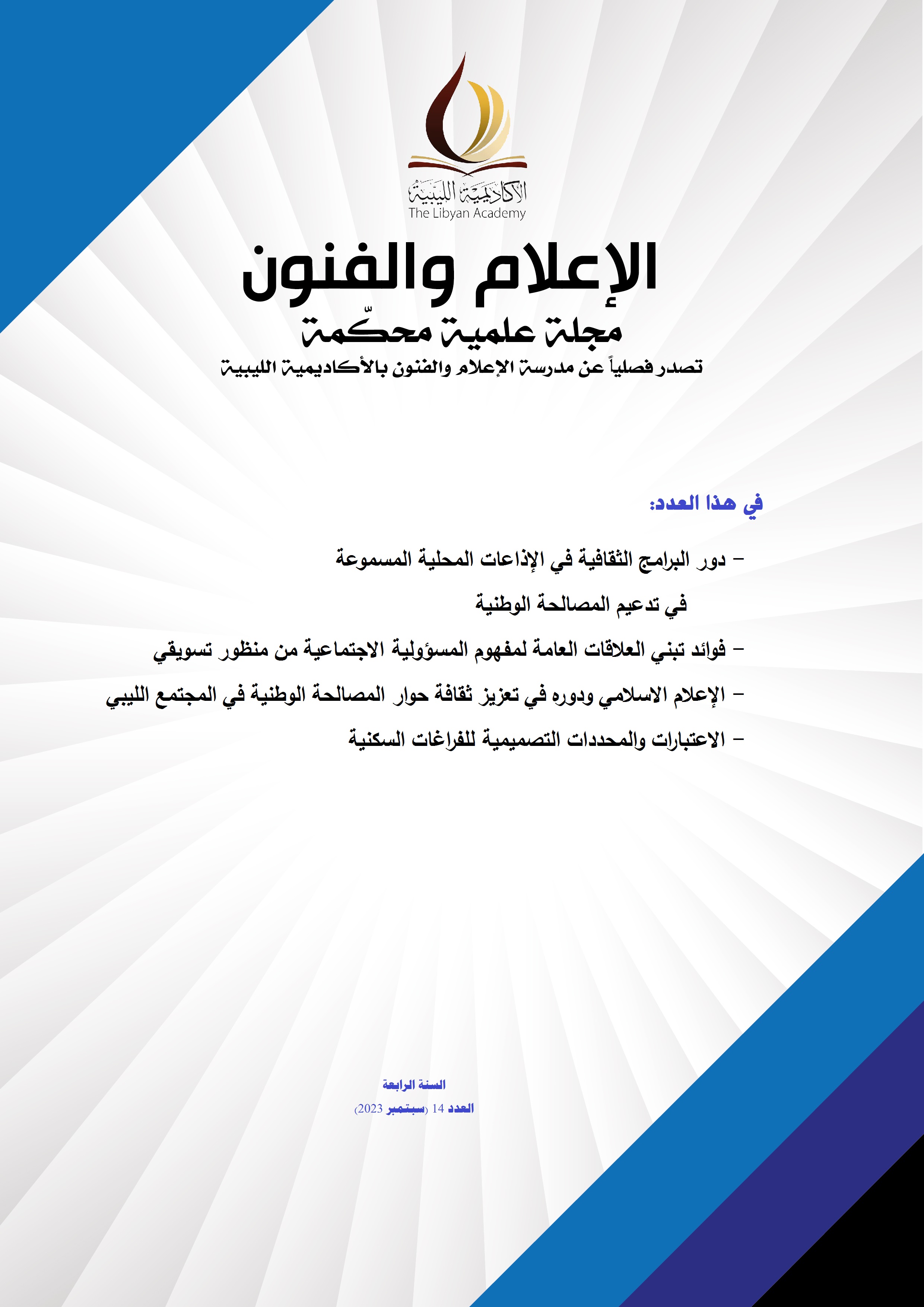الإعلام الاسلامي ودوره في تعزيز ثقافة حوار المصالحة الوطنية في المجتمع الليبي
Main Article Content
Abstract
Abstract:-
This study aimed to identify the extent to which the Islamic media contributes to promoting the culture of dialogue and reconciliation and the satisfactions achieved from it, and to reveal the public’s attitudes and the extent of their trust in the information and press coverage presented by these sites and media. And to reveal the difficulties and obstacles facing the Islamic media without achieving a culture of dialogue and reconciliation. The study aims to shed light on the role of Islamic media and influencing public opinion and how to employ Islamic media in order to achieve reconciliation in Libyan society and end the political division. The study is considered a descriptive study. The researcher relied on the descriptive, comparative, historical, and statistical method. He also used the A sample survey of the Libyan public, with the aim of knowing the extent to which the public is following reconciliation programmes. The researcher used the analytical method in collecting data on the phenomenon, statistical analysis, and the questionnaire form as a tool for collecting information. The study community is represented in the population of the city of Zawiya. The study reached several results, the most important of which are:
1- Most Islamic media programs are directed to the internal audience. There are no programs directed to the external audience to introduce the principles of Islam and the foundations upon which it is built and to clarify the wrong mental image drawn by the anti-Islam media and accuse it of terrorism and backwardness.
2- The study sample confirmed that the Islamic media is an important source of Islamic culture and that it was able to change their opinions regarding some issues in their lives that relate to worship, belief, morals, transactions, and promoting the culture of dialogue and national reconciliation in society.
3- It turned out that participation in Islamic media programs for the study population is somewhat modest, and that the percentage of males is more involved and in communication with Islamic media programs than females, and the aim of participation was to request fatwas and inquiries related to matters of worship.
4- It is clear that there is a lack of coverage of programmes, issues and topics related to the culture of dialogue and national reconciliation within Islamic media programmes, as they have not received their share of media treatment in the programmes.

